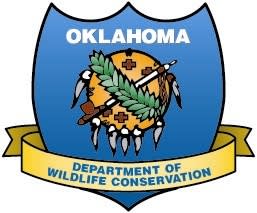Lake of the Arbuckles’ Remarkable Bass Point to Management Successes in Oklahoma

Recent remarkable catches at Lake of the Arbuckles have made a big splash in the local bass fishing community. On successive weekends in January, the winners of separate bass tournaments managed to haul in five-fish stringers totaling more than 40 pounds each.
That means each of the five largemouth bass on these two stringers weighed on average more than 8 pounds apiece!
The lunkers validate the fisheries management activities conducted by the Oklahoma Department of Wildlife Conservation over the previous decade at Lake of the Arbuckles.
“The ingredients that you need to produce trophy bass are present in Arbuckle right now,” said Gene Gilliland, assistant chief of fisheries with the Wildlife Department. “I really like seeing how Arbuckle has become quite a success story from a fisheries management perspective.”
During the Jan. 19 season-opening tournament held by Backyard Bassin’ Tournament Trail, anglers Jeff Reynolds and Johnny Thompson scored a big win with a stringer weighing 42.04 pounds. But they failed to win biggest-bass honors that day; that title went to a fish weighing 10.7 pounds that was brought in by the team of Marc Barber and Gary Rowland.
A week later on Jan. 26, Marco Vaca and Doyle Idleman won Future Bass Team Trail’s season opener. Their five-bass limit weighed in at 41.92 pounds. Again, the winning team did not catch the biggest bass of the day. Second-place team Reynolds and Thompson weighed in a 10.65-pound lunker for the prize.
Gilliland said Arbuckles’ big bass illustrate how proactive fisheries management can yield great results over time.
“Historically, Arbuckle has not been a great bass fishery. It was dominated by large numbers of small, slow-growing bass,” he said. “In the early 1990s, the Wildlife Department backed off on stocking Florida strain largemouth in Arbuckle because there was a period when the Department didn’t have enough production from the hatchery to stock Florida bass in very many lakes in the state.”
About a decade ago, as the hatcheries’ Florida strain largemouth production increased, the Wildlife Department resumed stocking them in Arbuckle and other Oklahoma lakes to enhance the trophy possibilities.
“Those fish have obviously matured,” Gilliland said. “The fish that we stocked, or the offspring of those stocked fish, are now turning into these trophy bass that are being caught on a pretty regular basis for about the past three years.”
He said Lake of the Arbuckles has grown big bass because of the favorable conditions found there. “You have good genetics from the stocking program, good habitat, and good forage. Arbuckle has a very good survival rate of young bass, and it’s also a lake where fish can live deep most of the year, avoiding encounters with anglers and growing older and bigger.
“Catching those bigger fish gets pretty tough later in the year, so the bass have a chance to grow up. I don’t think that many people realize how long it takes to produce an 8- to 10-pounder,” he said.
Gilliland cited another factor that might be contributing to angler success at Arbuckle.
“The fishing pressure has increased dramatically over the past few years. On an ‘angler per acre’ level, Arbuckle gets hammered,” he said. “There may be just as many big bass in other lakes where we have stocked Florida bass on a regular basis, like Sardis or Broken Bow, but those fisheries are much bigger,” which means the fishing pressure is spread across a larger area.
“When you have more anglers on a 2,300-acre fishery that is very accessible, the chances of someone catching a big fish generally go up,” Gilliland said.
Oklahoma’s bass fishing will be in the national spotlight in late February as the world’s greatest anglers gather at Grand Lake northeast of Tulsa for the 2013 Bassmaster Classic tournament, widely considered the Super Bowl of professional bass fishing.
The event is expected to lure as many as 70,000 people to the region, with a potential boost of about $24 million to the region’s economy.
“It’s easily the biggest fishing event that will ever come to Oklahoma,” Gilliland said.

